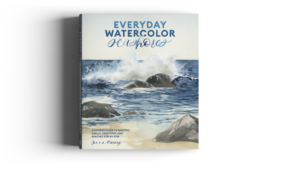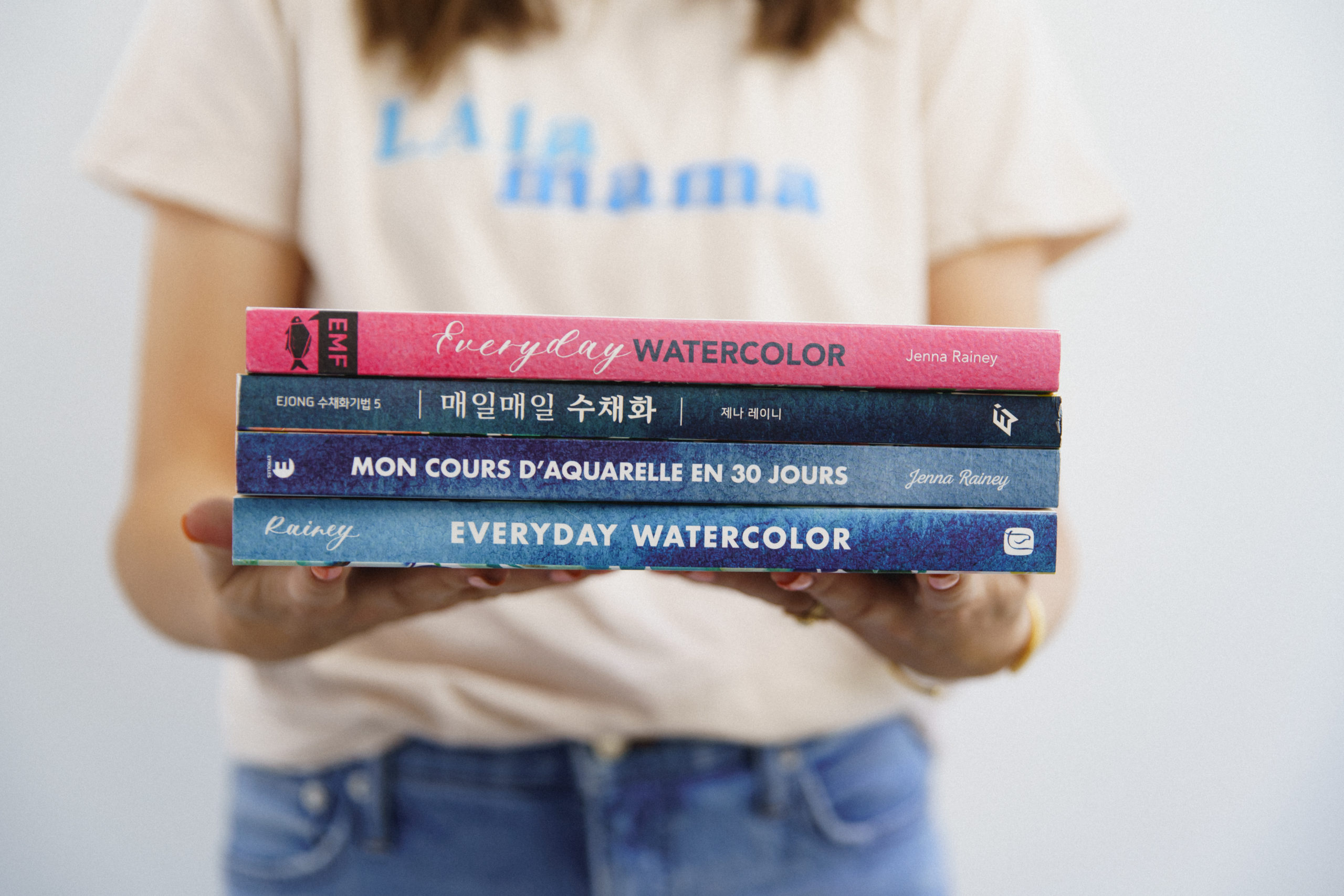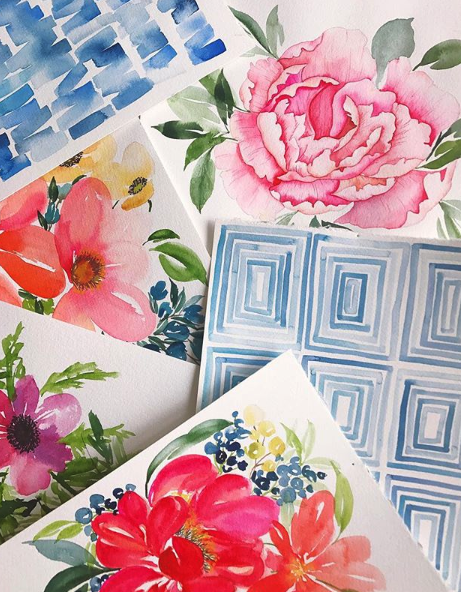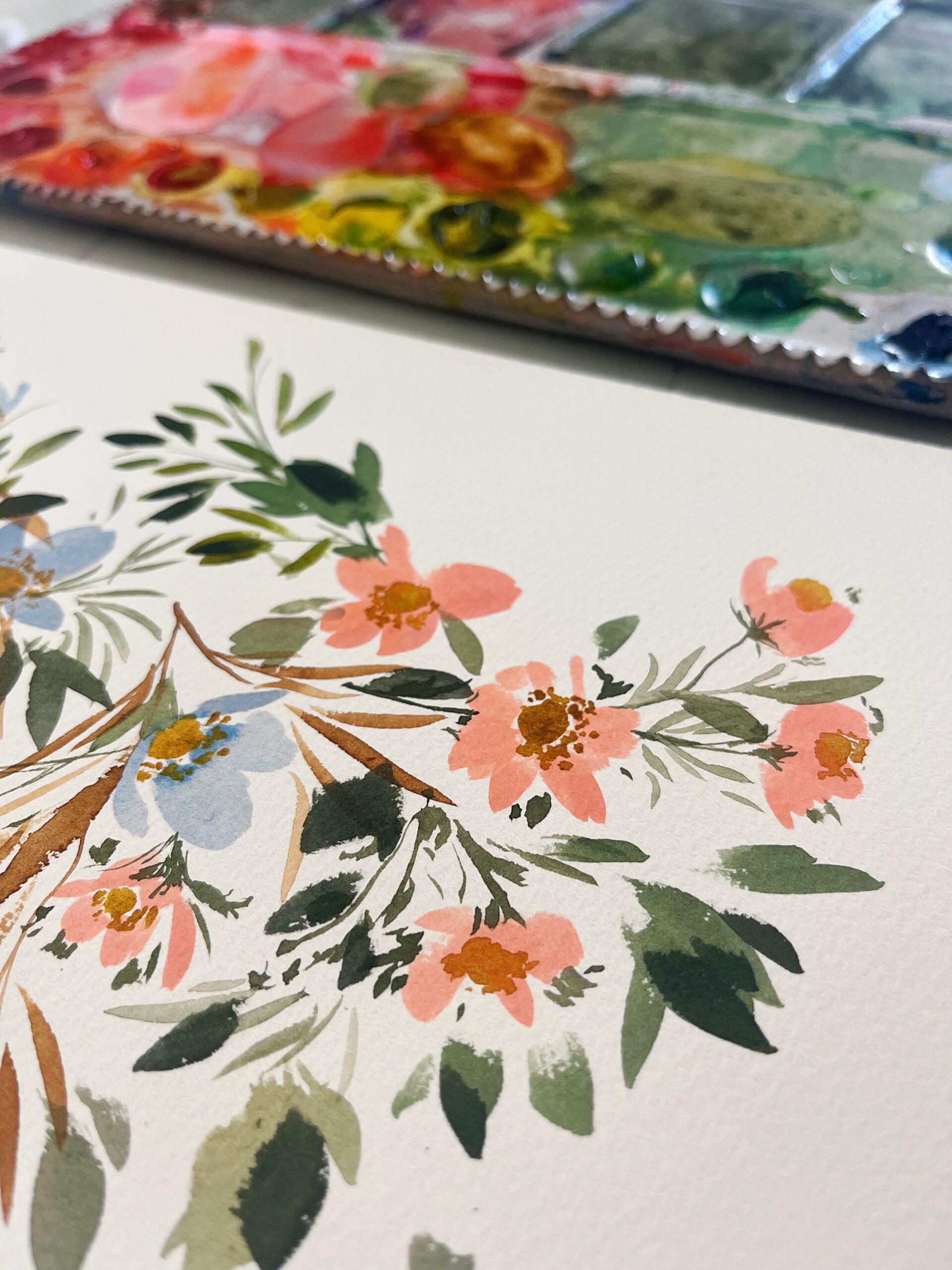I just finished the process of writing my third how-to watercolor book, Everyday Watercolor Seashores. This book comes out this upcoming March, but the process of writing, editing and publishing a book like this has been 2+ years in the making. Writing and publishing a book, whether you self-publish or go through a publishing house, is a HUGE undertaking.
In this blog post, I want to break down the general process of writing and releasing a book from start to finish.
Steps for Writing and Publishing a Book
1. The Spark of Inspiration
Every book starts with an idea. When I pitched my first book idea back in 2015 to Penguin Random House, my idea was for a coloring book. Thankfully, I included a thorough pitch deck that went with the book idea because I they hated my idea, but loved the idea of working with my and provided an idea for a watercolor book. More on that later, but, inspiration for an idea can strike from anywhere – a personal experience, a dream, a news story, or even a simple “what if” scenario. When you feel that spark of inspiration, it's essential to capture it. Keep a journal or digital note-taking app handy to jot down your thoughts and ideas.
2. Define Your Audience and Purpose
Before you dive into writing, determine who your target audience is and what you want to achieve with your book. Knowing your readers and your book's purpose will guide your writing style, tone, and content.
3. Develop a Writing Plan
Creating a writing plan or outline is crucial. It will help you organize your thoughts, maintain focus, and stay on track throughout the writing process. Your plan might include chapter summaries, character sketches, and a timeline for completion.
4. Set Writing Goals
Set realistic writing goals to maintain momentum. Whether it's a daily word count or a weekly chapter target, having goals keeps you accountable and motivated.
5. Start Writing
Now comes the actual writing. Some authors prefer to start with a rough draft, while others meticulously craft each sentence as they go. Choose a method that works best for you, but remember, the first draft is just that – a draft. Don't worry about perfection at this stage; you can always revise later. For my particular books, I do how-to watercolor stuff, so as I was painting each step of each chapter of the book, I was verbally calling out the process and recording it to my phone via voice notes. Once I had all of those audio clips, I had someone from my team upload each one into Rev.com to transcribe them into a Google Doc that I could then edit, refine and tweak! This saved me soooo much time in the writing process!
6. Revise and Edit
After completing your first draft, take a step back and let it rest for a while. Then, return with fresh eyes to revise and edit. Look for clarity, consistency, and readability. You might need to make multiple rounds of revisions to refine your work.
7. Seek Feedback
It's beneficial to have others read and provide feedback on your manuscript. Joining a writing group or beta readers can offer valuable insights and help you identify areas for improvement.
8. Professional Editing
Consider hiring a professional editor to review your manuscript for grammar, style, and content. Their expertise can make a significant difference in the quality of your book.
9. Design a Book Cover
A compelling book cover is essential for attracting readers. Work with a professional designer or use a reputable book cover design service to create an eye-catching cover that represents your book's content.

10. Formatting and Layout
Formatting your manuscript for print or digital publication is crucial. Proper formatting ensures that your book looks professional and is easy to read. You can learn to do this yourself or hire a formatting expert.
11. ISBN and Copyright
Obtain an International Standard Book Number (ISBN) for your book, which is essential for distribution and sales tracking. Also, consider copyrighting your work to protect your intellectual property.
12. Publishing Options
There are two main paths to publishing: traditional publishing and self-publishing.
Traditional Publishing
- Reach out to literary agents or publishers with your manuscript.
- If accepted, the publisher will handle editing, cover design, distribution, and marketing.
Traditional publishing can be competitive and may take longer to secure a book deal. This is the route I chose because I loved the idea of not having to worry about printing costs, distribution and getting it into stores. However, it took a LOT of pitching practice and nailing my pitch email to secure this as I was a brand new author with 18K Instagram followers at the time. Nothing major.
Self-Publishing
- Self-publishing gives you full control over your book's content, design, and distribution.
- You can publish through platforms like Amazon Kindle Direct Publishing (KDP), IngramSpark, or Smashwords.
Self-publishing allows for quicker publication but requires more marketing and promotion effort on your part.
13. Distribution
Decide where and how you want to distribute your book. Amazon, Barnes & Noble, and other online retailers are popular options for both print and e-books. Consider if you want to make your book available in bookstores or libraries as well.
14. Marketing and Promotion
Promoting your book is essential to reach your audience. Develop a marketing plan that includes social media promotion, book launch events, book reviews, and author interviews. Building an author platform through a website or blog can also help connect with readers.

15. Launch Your Book
Plan a book launch to generate buzz and excitement around your release. Host virtual or in-person events, offer pre-order incentives, and engage with your readers.
16. Monitor Sales and Reviews
Keep an eye on your book's sales and gather feedback from readers. Reviews can be valuable for future marketing and improving your writing.
17. Continue Writing
Don't stop writing after your first book. Continue honing your craft and working on new projects. Building a catalog of books can attract more readers and increase your visibility as an author.
18. Learn and Adapt
The publishing landscape is continually evolving. Stay informed about industry trends, marketing strategies, and new technologies and tools. Adapt your approach to meet the changing needs of your readers and the market.
19. Stay Persistent
The journey from writing to publishing can be long and challenging, but persistence is key. Keep writing, learning, and refining your skills as an author.
20. Celebrate Your Achievements
Finally, remember to celebrate your achievements. Publishing a book is a significant accomplishment, and you should be proud of your hard work and dedication.
In conclusion, writing and publishing a book is a multifaceted process that requires creativity, determination, and careful planning. Whether you choose traditional publishing or self-publishing, the key is to stay committed to your craft and your readers. Embrace the journey, learn from your experiences, and continue sharing your stories with the world. Your book has the potential to inspire, entertain, and make a lasting impact, and that's a journey worth taking. Happy writing and publishing!









+ show Comments
- Hide Comments
add a comment